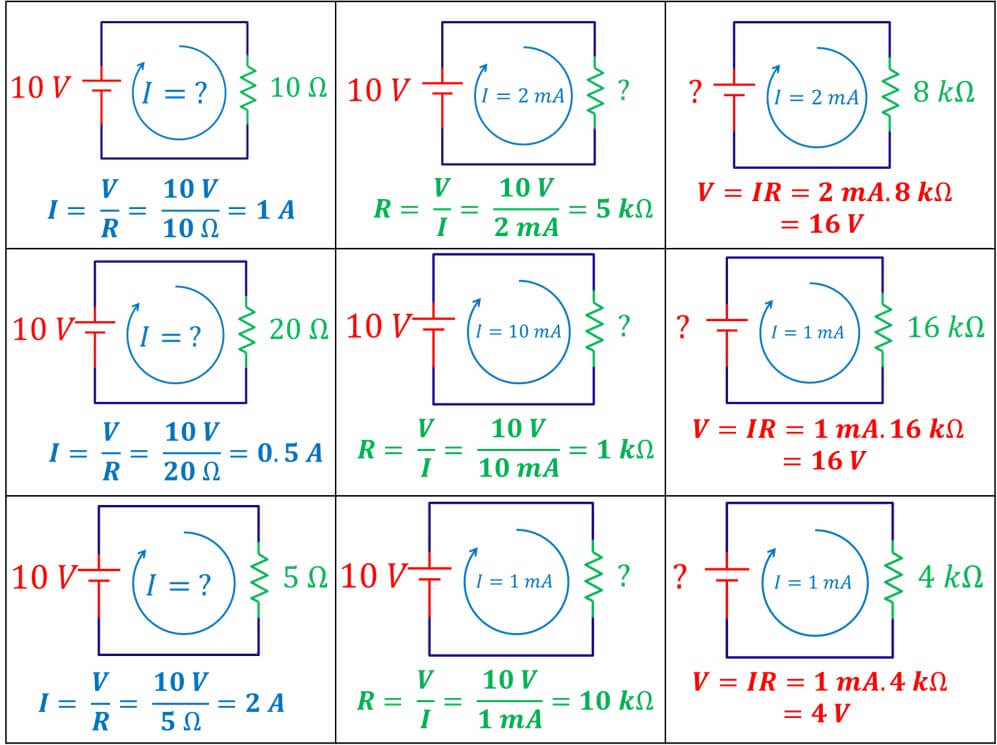Ohm’s law is a Basic Electrical and Electronics Engineering law which relates current, voltage and resistance in a circuit.
Statement: The current in a resistive circuit is directly proportional to the applied voltage and inversely proportional to its resistance.
Mathematical Formula,
I = V/R
Where
- I = Current in amps
- V = Voltage in volts
- R = Resistance in ohms
Consider a resistor R connected to a voltage source V:

If a voltage source V drives an external circuit having resistance R, then, in accordance with Ohm’s law current V/R will flow through it.
Example 1: Let’s assume V = 10 V, and R = 15 ohms, then current I is:
I = V/R = 10 V /15 ohms = 0.66 amps
Provided that there are two known factors, one can compute the third factor by using Ohm’s law equation. 9 different problems in this scenario are illustrated here.
- Left column provides method to find current from voltage & resistance
- Mid column presents method to calculate resistance provided voltage and current are known
- Right column illustrates computation of voltage from resistance and current (amps)
